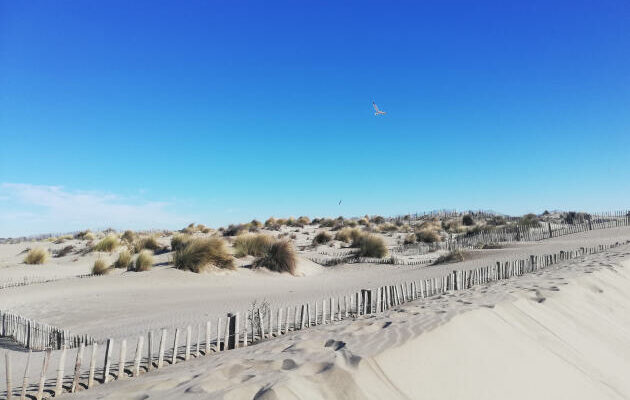At the end of winter, under the stormy sky, you have to hold on to the railing to avoid taking off. On the balcony which surrounds the summit of the Espiguette lighthouse, in Grau-du-Roi, at the extreme south of the Gard department and on the borders of the Petite Camargue, in the gusts of an east wind, we expects to contemplate the waves of the raging Mediterranean. Instead, a sea of sand spreads out at our feet.
The tip of Espiguette designates the longest fine sand beach on the Mediterranean coast in France, 12 uninterrupted kilometers, a white immensity whose particular relief constitutes a landscape and ecological pearl. “It is the only place where you can see a complete dune system, without human disturbance, which makes the site one of the most natural on the French coast”explains Florine Escot, responsible for the lighthouse, not at all bothered by the wind.
In the distance, between this promontory and the shore, the sand accumulates in “mobile dunes”, that we can practically “see movement with the naked eye”, says Florine Escot. The wind carries part of them backwards, where they form clumps on which oyats grow, plants insensitive to salt and a sort of genius of the place. Seen from above, oyats look like tufts of hair. But their roots, which go deep, trap the siliceous grains, thus allowing the formation of “white dunes”.
“In the event of heavy seas, the water passes these first two barriers, but stops at the third”, specifies the manager, now hooded. Here are the “gray dunes”, which can reach up to 12 meters in height here. Maritime cakiliers, sand lilies, immortelles and sea hawksbills populate them. Finally, behind them, the “fossil dunes”, immobile, wooded with umbrella pines and junipers, form a band of shades of green.
Grey-brown plumage
The hollows and bumps of this setting shelter a discreet and yet noisy population who know how to wait for the wind to die down and dusk to arrive. The Cultriped Pelobate, a sand-colored toad in which it is also capable of burrowing, lives in the small pools that form between the mounds. This ecosystem also constitutes a nesting site for the Ring-necked Plover, a small, nervous shorebird, just as chameleonic as its amphibian neighbor, with its gray-brown plumage. “Here, the strip of sand is very wide, there is room for everyone, for them and for tourists! »exclaims Florine Escot.
You have 67.77% of this article left to read. The rest is reserved for subscribers.
